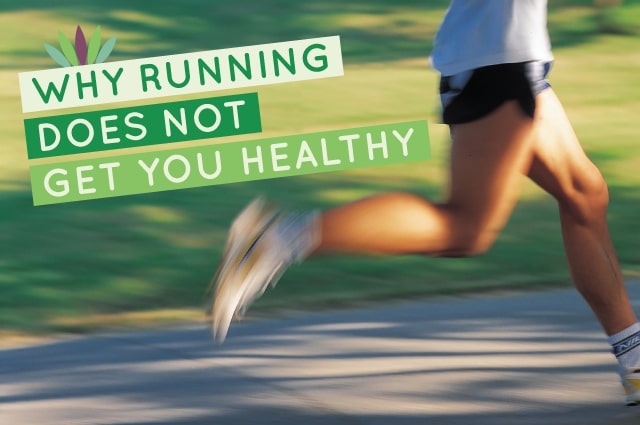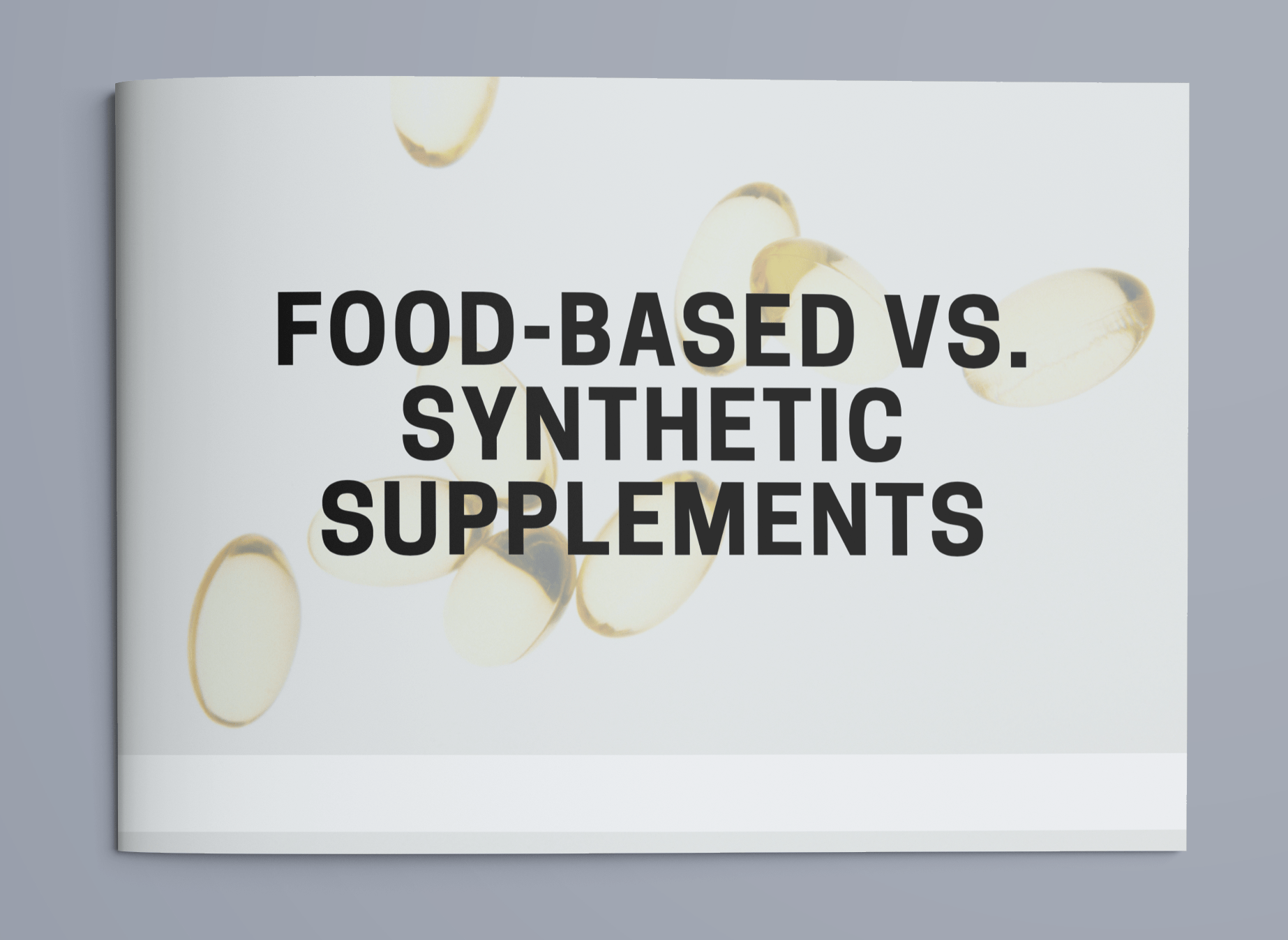Top 5 Tips to Go Gluten-Free!

Most people never suspect that foods they eat at every meal may be undermining their health or prevent them from losing weight. As many as 6-10% of the population are gluten sensitive or intolerant. I’m going to break down 5 easy steps you can take TODAY to start living a gluten-free life!
I remember for the longest time, I couldn’t understand what it REALLY meant to be sensitive to gluten. There was (and still is) so much conflicting information on the web – much of it in terms and words that didn’t mean anything to me and effectively left me in the dark. It wasn’t until I woke up and did some serious research and got myself informed that I started to grasp this very complex issue and how it directly affects our health.
You may remember that back in 2012, I wrote about Gluten Sensitivity.
As founder of the Myers Detox Protocol, I’ve often revisited this subject of Gluten sensitivity over the years and wanted to do so again now. I know how much your health means to you and, so, when you don’t feel good and there doesn’t seem to be clear answers, I know how frustrating that can be. Which is why I am going to address those issues in regards to gluten sensitivity. Whether you’re a newbie or a fifteen-year veteran living gluten-free, I hope you are able to take something away that you can implement into your life and improve your health.
Top 5 Tips to Go Gluten-Free!
1. Attend the Women’s Gluten-Free Summit!
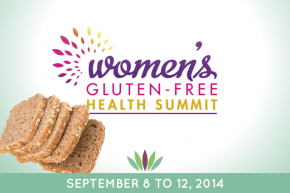 My friend Jennifer Fugo, the founder of the Gluten Free School, is hosting an amazing online event called the Women’s Gluten-Free Summit! Oh, and I will be one of over 20 experts taking part to help you live a more healthy, vibrant, and gluten-free life! I’ll be talking about how to do a food elimination diet.
My friend Jennifer Fugo, the founder of the Gluten Free School, is hosting an amazing online event called the Women’s Gluten-Free Summit! Oh, and I will be one of over 20 experts taking part to help you live a more healthy, vibrant, and gluten-free life! I’ll be talking about how to do a food elimination diet.
So what is it? The purpose of the Women’s Gluten-Free Summit is to bring women together on the complex topic of gluten sensitivity and how it affects your health. We will break down all the scientific jargon in a way that is easy for you to digest (sorry, I couldn’t resist the pun!); as well as provide you with steps you can easily put into action to help you feel better in your day-to-day life!
2. Try A Gluten Elimination Challenge!
If you can’t afford gluten sensitivity testing, you can try a food elimination diet with a “gluten elimination and challenge.” This involves removing gluten from the diet completely for a period of at least two weeks (some may need to eliminate gluten for longer to calm the body) and then adding it back in after that. If symptoms improve during the elimination period and return when gluten is reintroduced, a diagnosis of Non-celiac gluten sensitivity (NCGS) can be made.
Here is how you do a two-week gluten elimination diet. Eat no foods that contain gluten for 14 days, then do a ‘challenge’ where you eat gluten-containing foods for a couple of days and see how you feel. If gluten is the cause of your bad moods, low energy, and stomachaches, you’ll usually feel better within two weeks once you stop eating it. But these symptoms may all return with a vengeance if you start eating these grains again.
Unfortunately, most people don’t feel better immediately after eliminating gluten from their diets as it may take 30 to 90 days for the inflammation to subside and the gluten antigens to be eliminated from your body. It may take up to 9 to 12 months for the lining of your small intestine to heal if you have leaky gut syndrome caused by gluten. After 6 to 9 months of being gluten-free, most people with gluten sensitivity will enjoy noticeable physical, mental, and emotional changes.
However, for many people, a gluten-free diet isn’t enough. Some grains that don’t contain gluten, such as corn, oats, and rice, contain proteins that are similar enough in structure to gluten to elicit an immune response in people with Celiac Disease (CD) or NCGS. Many people with gluten sensitivity or CD also have an intolerance to casein, the protein in milk. This may explain why up to 30 percent of CD or NCGS patients continue to have symptoms or clinical signs after adopting a gluten-free diet. For this reason, I recommend a complete grain- and dairy-free diet during the gluten elimination diet.
In addition, confounding factors like multiple food allergies or sensitivities can mask gluten sensitivity. For instance, if you eliminate gluten from your diet but don’t feel better, this does not necessarily mean you’re not gluten sensitive. This could mean that you are also allergic to soy or eggs, for instance, but are still eating these foods while doing the gluten elimination. In this case, you may need to do a full elimination diet and challenge test of common foods that cause food sensitivities. For more information, read my article Food Sensitivities Make You Sick and Fat.
3. Check Your Labels!
The Gluten Intolerance Group is a wonderful, up-to-date, resource for understanding the complex labeling system when it comes to gluten-free products. They recommend using one of these three simple ways to check your food labels when you on gluten patrol (3, 4)!
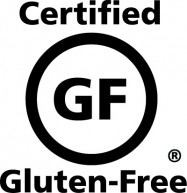 Look for the Certified Gluten-Free label on products. This logo of is distributed by 3rd party organizations, such as the Gluten Intolerance Group, and means the product is certified safe for those with gluten sensitivity. The logo may look something like this:
Look for the Certified Gluten-Free label on products. This logo of is distributed by 3rd party organizations, such as the Gluten Intolerance Group, and means the product is certified safe for those with gluten sensitivity. The logo may look something like this:- Date of production. Any product sold in the U.S. that is FDA regulated and produced after August 5th, 2014 and uses the phrase “gluten-free” on its packaging and is considered safe. So if it says “Gluten-free”, “no gluten”, “Free of gluten” on the packaging and was made after this date, you are safe!
- When all else fails, check the ingredient list! If a product is not certified gluten-free and it does not say “gluten-free” on the packaging, make sure you read the full ingredient list. Anything that has wheat (including spelt), barley, oats, malt, or brewer’s yeast is NOT considered gluten-free.
And remember to check the ingredient list every time you shop, as a manufacturer may change or add ingredients at any time.
4. Shop Savvy!
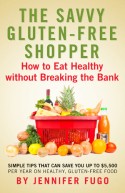 Eating gluten-free is a financial burden for many celiac and gluten sensitive families. What starts out as a quest to get back your good health by going gluten-free can create a huge amount of stress over money since the Gluten-Free Diet can cost about two and a half times more money than your former gluten-filled diet. But, this doesn’t have to happen to you! 4
Eating gluten-free is a financial burden for many celiac and gluten sensitive families. What starts out as a quest to get back your good health by going gluten-free can create a huge amount of stress over money since the Gluten-Free Diet can cost about two and a half times more money than your former gluten-filled diet. But, this doesn’t have to happen to you! 4
Luckily, Jennifer Fugo, founder of GlutenFreeSchool.com, has a new book to help! Eat healthier, better quality real food within your budget with the help of her book, The Savvy Gluten-Free Shopper: How to Eat Healthy Without Breaking the Bank.
Learn her creative tips and tricks that have helped thousands reduce the cost of their monthly grocery expense by up to 50%! With 27 easy-to-make, healthy, gluten-free recipes, you’ll even discover how to cook less (only 2 or 3 times each week)! Plus, Jennifer will give you her “Making Menu Planning Easy” guide to save money and time while cooking and shopping smarter (1).
Get your copy now to start saving money and eating better the very next time you go to the grocery store!
5. Stock Your Freezer!
“In a perfect world, I’d cook every meal from scratch. I’d experiment with spices all the time and work on concocting all sorts of new gluten-free dishes. That would be lovely… for me at least… in a perfect world. One of my best go-to gluten-free food moves was making friends with my freezer. I never had any idea how valuable and helpful it could possibly be until I finally faced reality many times over that I just didn’t have enough time in the day to cook everything from scratch. Here’s the thing, eating gluten-free only becomes a challenge when you don’t plan anything, don’t cook extra servings, or don’t know how to stock your kitchen so that you can ALWAYS throw something together.” Jennifer Fugo (2)
For more information on how to properly stock your freezer, check out the rest of this great article from Gluten Free School (2).
If all else fails or you find yourself at a restaurant where you never know what gluten is lurking in the food, be sure to have a bottle of Glutenza handy. I always have a bottle with me when I eat out!
Click Here for References+
Click here to view references







